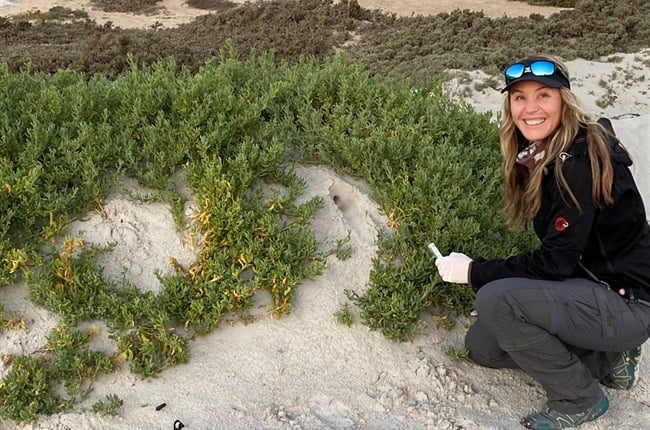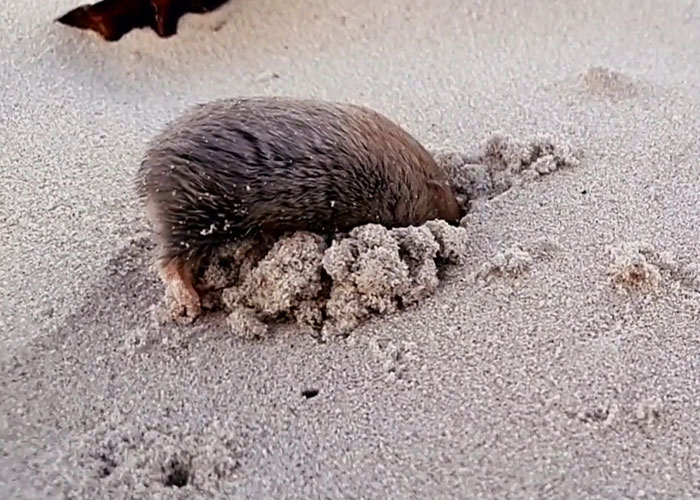"Dream, Dream, Dream! Conduct these dreams into thoughts, and then transform them into action."
- Dr. A. P. J. Abdul Kalam
"Dream, Dream, Dream! Conduct these dreams into thoughts, and then transform them into action."
- Dr. A. P. J. Abdul Kalam
5 Jul 2024
A species of golden mole that hasn't been seen in over 80 years has been found again. It was thought to be extinct. The De Winton's golden mole was last observed in 1937, and after much searching, researchers have finally located the cute tiny animal in South Africa's dunes. The golden mole swims through the sand to create inaccessible burrows where it dwells, unlike other moles who find refuge deep in the ground. To begin their hunt for the golden mole, the researchers collected and examined over one hundred sand samples. They did this by looking for environmental DNA (eDNA), which is the animal's DNA that is left behind in its surroundings through excretions, skin cells, and hair.
"We were pretty sure that if De Winton's golden mole was out there, we could find it and sequence its DNA," Samantha Mynhardt, a conservation geneticist from Stellenbosch University and the Endangered Wildlife Trust (EWT) in South Africa, said in a release.

Why 'It' Matters? ~'lost' golden mole spotted for the first time! (Source: Google Images)
There is only one location where the De Winton's golden mole has ever been discovered: Port Nolloth on the northwest coast of South Africa. The research team had to figure out a method to distinguish between more common moles, though, because this region is home to numerous other kinds of golden moles. A trained sniffer dog was released in the area upon discovering new golden mole tracks. The two most prevalent golden moles, the Cape golden mole (Chrysochloris asiatica) and Grant's golden mole (Eremitalpa granti) were the triggers for this dog's training. Given that the dog showed no reaction to the track, it was proof of a more uncommon golden mole.
Two additional sets of DNA as well as the DNA of the two common golden moles were discovered upon receipt of the results of the eDNA tests conducted on the 100 samples of sand in Port Nolloth. Two: one is an unidentified one and belongs to the critically endangered Van Zyl's golden mole (Cryptochloris zyli). Although experts believed this belonged to the supposedly extinct De Winton's, they were unable to provide any evidence for this theory. Until a De Winton's golden mole specimen, which is currently housed in the Iziko South African Museum in Cape Town, a DNA sample from the specimen became accessible for analysis. The specimen's genes match the sample's unidentified mole.
Back from extinction ~

Golden Mole That Swims through Sand Rediscovered ~ (Source: Google Images)
Since their rediscovery, four more populations of De Winton’s golden mole have been found. Though some researchers always believed they were still out there: “Though many people doubted that De Winton’s golden mole was still out there, I had good faith that the species had not yet gone extinct,” says Cobus Theron, senior conservation manager for EWT and member of the mole search team. “I was convinced it would just take the right detection method, the proper timing, and a team passionate about finding it,” he added. “Now not only have we solved the riddle, but we have tapped into this eDNA frontier where there is a huge amount of opportunity not only for moles but for other lost or imperiled species.”
Debunking A Myth ~ Not Actually Moles!
Though called after them and bearing an amazing resemblance to moles, golden moles like the De Winton's golden mole aren't really moles at all. These insectivorous mammals are actually more closely related to tenrecs and otter shrews. Indeed, moles and golden moles have a lot in common. Even if they are not closely related, animals can share numerous features due to a phenomenon called evolutionary convergence. They have strong digging claws, like moles, and dwell underground for the majority of their life. They also lack sight.
“Fortunately, nature is amazingly resilient: places we have destroyed, given time and help, can once again support life, and endangered species can be given a second chance. And there is a growing number of people, especially young people, who are aware of these problems and are fighting for the survival of our only home, planet Earth. We must all join that fight before it is too late.” – renowned English primatologist Jane Goodall on the threats of biodiversity.
Comments
Nice Post